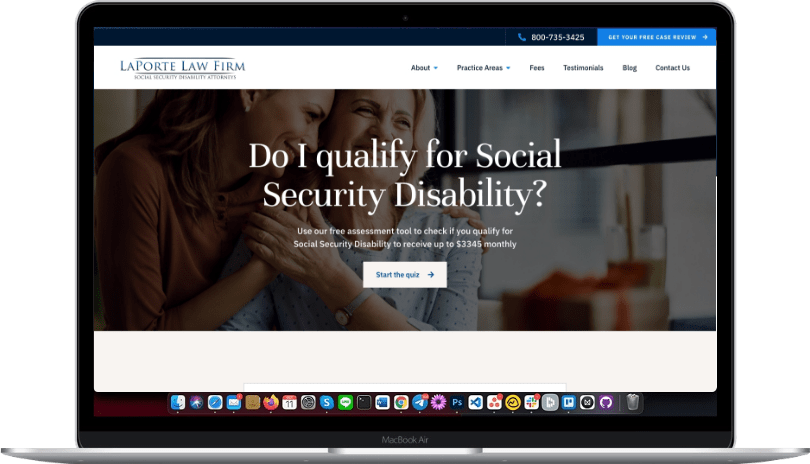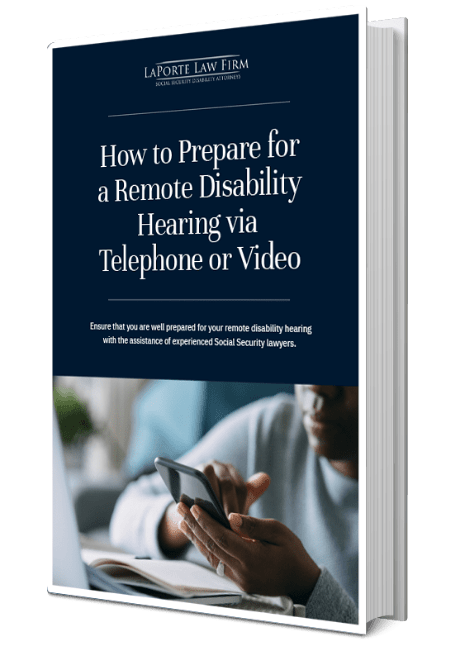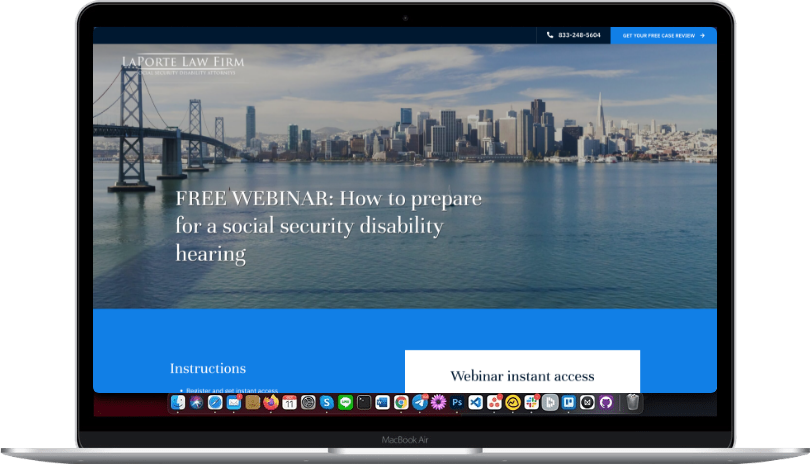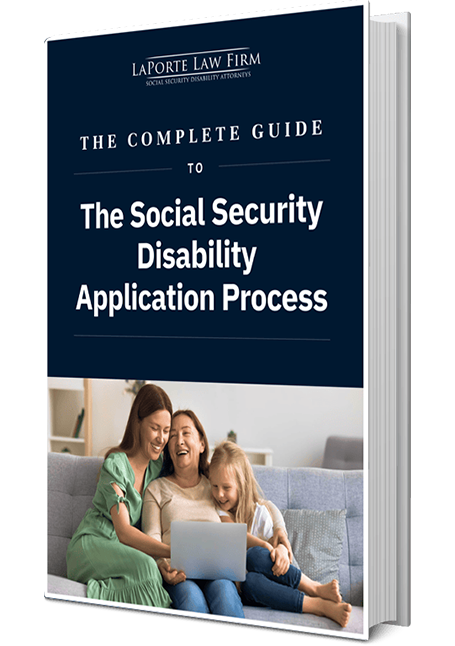
Disability claims can take months or even years to process, leaving many individuals without a steady source of income while they await a decision. During this period, it’s crucial to plan carefully to ensure you can meet essential expenses. While approved benefits eventually provide vital support, navigating this interim phase requires a clear understanding of both the income limits imposed by Social Security Administration (SSA) and the potential financial resources available to you.
In this article, we’ll delve into effective strategies you can employ to generate income while awaiting your disability approval, ensuring that you maintain stability during this waiting period.
Typical Timelines for Receiving Benefits
One of the most significant challenges for Social Security Disability Insurance (SSDI) applicants is the long wait time for a decision. In 2025, the average wait time for an initial SSDI claim decision is approximately six to nine months, with some cases extending beyond a year.
If an applicant is denied at the initial stage and must appeal, the wait time can increase substantially. A request for reconsideration can take an additional 6 to 12 months, and if the case proceeds to a hearing before an administrative law judge (ALJ), the average wait time for a hearing date can range from 4 to 18 months, depending on the backlog in your local hearing office.
This means that from the time an applicant files a claim to when they receive a final decision, the entire process can take one to three years. During this period, finding alternative income sources is crucial.
Related reading: How Can Remote Disability Hearings Reduce Your Wait Time?
Earnings limits for SSDI and SSI
The SSA uses the concept of substantial gainful activity (SGA) to determine whether your work is significant enough to impact your eligibility for disability benefits. For 2025, the SSA has set the monthly SGA amount at $1,620 for non-blind individuals and $2,700 for statutorily blind individuals. Earning below these thresholds — known as below-SGA level income — generally indicates that your work activity is minimal enough to be below the threshold of what SSA considers “working.” This is an important benchmark when considering alternative income sources during the period your disability claim is under review, because generally, a disability claimant cannot be working and eligible for disability benefits. However, there are important exceptions to this general rule.
Exploring Financial Assistance Options
Many individuals waiting for SSDI or SSI (Supplemental Security Income) benefits may seek financial assistance from public benefits such as California State Disability (SDI), workers’ compensation, unemployment through the state Employment Development Department (EDD), long-term disability through private insurance programs, 401K withdrawals, or public assistance such as SNAP food benefits or general assistance. To find out what forms of assistance you may qualify for, contact your local Department of Human Services office.
Beyond applying for financial assistance programs, other options include pursuing part-time work below the substantial gainful activity limit, or looking into early Social Security retirement. Let’s take a closer look at these options.
Applying for financial aid
- California State Disability Insurance
The California State Disability Insurance program offers partial wage replacement for residents of the state who are temporarily unable to work due to disability. Although SDI benefits typically do not replace your full income, they can provide critical financial relief during the review phase of your Social Security claim. Be sure to review your state’s eligibility requirements and application procedures to see if SDI is an option for you.
It’s important to note that SDI only lasts for 12 months. Therefore, it is commonly referred to as “short-term disability.” This poses challenges for SSDI claimants, who face longer wait times for their cases, and who must plan for gaps in income between the exhaustion of their SDI benefit and the approval of their SSDI benefit.
- Workers’ compensation
If your disability stems from a workplace injury or illness, you may be eligible for worker’s compensation benefits. These benefits are designed to support you financially during your recovery and while your Social Security disability claim is being evaluated. You can file a claim for Social Security disability while you have a workers’ compensation claim going simultaneously. However, it’s important to understand the potential impact of your workers’ compensation claim on your SSDI claim in terms of a reduction in the monthly SSDI amount. For more information on how the two programs overlap, check out our recent blog post on the subject.
- Long-term Disability Insurance (LTD)
Many employers offer private short- or long-term disability insurance policies at no cost to employees, which can provide financial support during periods of disability. In addition to the above options, LTD can serve as a valuable income supplement while your claim is under review.
- Supplemental Nutrition Assistance Program (SNAP)
Programs like SNAP, commonly known as food stamps, can be invaluable during this time. Although SNAP benefits aren’t direct income, they significantly reduce the cost of groceries, allowing you to allocate your limited resources to other essential expenses.
Additionally, local community organizations might offer assistance with housing, utilities, or other necessities, helping to further reduce your monthly financial burdens.
Related reading: Can You Get Food Stamps (SNAP) While on Disability?
- In-Home Supportive Services (IHSS)
For an individual with a disability who is taking care of a family member and receiving IHSS income for their work, the pay can easily rise above the allowable limit for Social Security disability benefits, which is $1,620 gross per month in 2025. In many cases, the disabled caregiver is providing in-home services for a family member that is even more gravely disabled than the beneficiary. Because their “client” is a family member, the disabled caregiver is not working in a traditional competitive work environment in which the client’s needs are prioritized over the health and safety of workers.
This arrangement is a perfect fit for a disabled person who cannot perform full-time, competitive employment. However, if you are an IHSS caregiver who is applying for Social Security disability, you should carefully review the SGA rules that may apply to your income, and consider consulting a disability attorney.
Emergency disability payments
The SSA may provide an emergency advance payment to new applicants facing a financial emergency when their SSI benefits are delayed or not received, which can cover immediate needs such as food, clothing, shelter, or medical care.
Applicants who are experiencing a financial emergency may also qualify for an immediate payment of up to $999 while awaiting their SSI benefits. For more information about emergency disability payments, read our blog post on the topic.
Working while waiting for disability
You can work while your disability claim is still pending, but the duration of your return to work and the amount of income you receive could impact your claim. As mentioned above, the SGA limit for 2025 is set at $1,620 per month; earnings above this amount can impact eligibility for Social Security Disability Insurance .
However, there are exceptions to this rule. Under Social Security regulations, if you return to above-SGA level income and stop within six months due to your disability, you can argue that this work reflects an unsuccessful work attempt..If the SSA agrees that you stopped working due to your disability, and that the return to work after your alleged onset date of disability lasted less than six months, your work was an unsuccessful work attempt and does not interfere with your claim for disability. You can be approved for retroactive back payments even for months in which you returned to SGA level employment.
Related reading: Working While Receiving Social Disability Benefits
Working part time below the SGA limit
Many disabled individuals find that gig work, freelancing, and other flexible income sources offer a unique advantage during the disability claim process. The inherent flexibility of gig work allows claimants to work part time or on an as-needed basis, adapting their work schedule to accommodate their impairments. This flexibility can be a positive aspect, enabling you to generate supplemental income while still managing your disability.
However, it’s important to remain mindful of the income limits: if your earnings from gig work rise above the 2025 SGA threshold of $1,620 net for non-blind individuals —your claim for disability could be jeopardized, even if you work only part time.
Balancing the benefits of flexible work with the potential risks of exceeding SGA levels requires careful planning and monitoring of your income. If you perform gig work for an app such as Uber or Doordash, be sure to keep the records of the precise hours you worked and income you received minus expenses. The SGA threshold considers net income for self-employed gig workers, so it is critical to document your expenses in addition to your income.
Exploring pension-based income options
Individuals waiting for disability benefits can consider applying for pension benefits, which can provide interim income while their disability application is processed. You can qualify for Social Security Disability even if you are drawing a retirement pension.
Related reading: Does My Union Pension Affect My Social Security Disability Benefits?
- Early Social Security retirement
Early Social Security retirement is available to individuals at age 62. You can apply for early Social Security retirement while your disability claim is pending and receive your early retirement monthly payment while waiting for the final outcome on your disability case.
The application for early retirement will not impact the ultimate decision regarding whether you are disabled or not under SSA rules. However, there is an inherent risk in applying for early retirement if your disability claim is not ultimately approved because you will be stuck at the reduced retirement rate permanently. In general, the longer you wait to file for early retirement, the higher the lifetime payment.
Everyone has a unique financial situation, so you should consider consulting a disability attorney and a financial advisor prior to filing for early retirement.
- 401(k) or other retirement saving
Borrowing from a 401(k) or another retirement plan can provide financial support to cover bills while waiting for disability payments to arrive. 401(k) withdrawals are not considered as earned income for SGA purposes. This is due to the fact that 401(k) plans were funded by previous years of FICA-taxed earnings, before the disability began, and you do not perform services to receive this income.
Related reading: Does 401(k) Withdrawal Affect Social Security Disability?
Waiting for your disability claim approval shouldn’t mean financial uncertainty. Knowing the latest Social Security rules, like the 2025 SGA levels, and how different benefits work together is key. Plus, there are ways to find income while you wait. Ready to take control of your finances during this time? Let’s talk. Reach out to LaPorte Law Firm today for clear, personalized guidance.
FAQS
Yes, you can work, but your earnings must stay below the Substantial Gainful Activity (SGA) limit set by the SSA. In 2025, the SGA limit is $1,620 per month for non-blind individuals and $2,700 per month for statutorily blind individuals. If you exceed these limits, your claim may be denied. However, if you stop working within six months due to your disability, you may qualify for an unsuccessful work attempt exception, which won’t affect your eligibility.
While waiting for SSDI or SSI approval, you may qualify for:
- State disability programs (e.g., California State Disability Insurance)
- Workers’ compensation (if your disability is job-related)
- Long-term disability insurance (if offered by your employer)
- Public assistance programs such as SNAP (food stamps) or general aid
- 401(k) withdrawals or pension benefits
Each program has different eligibility requirements, so it’s important to check what applies to your situation.
Yes, you can apply for early Social Security retirement benefits at age 62 while your disability claim is pending. However, if your disability claim is later denied, you will remain at the reduced retirement benefit level permanently. If approved for SSDI, your benefits will be adjusted to the full disability amount. Consulting a financial advisor or disability attorney is recommended before choosing this option.
The SSA may provide an emergency advance payment to new SSI applicants who face immediate financial hardship. In some cases, applicants can receive up to $999 in expedited benefits if they meet emergency criteria such as needing funds for food, rent, or medical expenses. You should contact the SSA to determine if you qualify.















